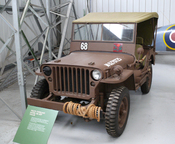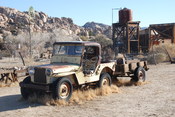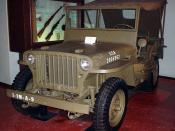In 1907, the Willys Overland company was nearing bankruptcy, but things soon changed for the best, and Willys Overland was turned around, and achieved the second highest sales in the United States.
The United States army had set out a list of requirements for a military vehicle to be used in World War 2 by the United States and their allies. They chose three manufacturers, Willys Overland, Ford and Bantam to design and produce prototypes that met the army's requirements. Willys Overland, following extensive testing, was awarded the contract to produce the vehicles for the army. Yet the final vehicle, after a few submissions, was a combination of ideas from all 3 manufacturers, and was named the GPW by the army, but Willys Overland called it the MB. 'G' for government, 'P' for pigmy (a Ford term) and 'W' for Willys, is what GPW stands for, yet story has it that uninformed army officers and soldiers thought that 'GP' was for general purpose, and pronounced it 'Jeep,' and this is how the Jeep name originated.
Willys Overland had to modify its design to meet the army's specifications for the vehicles weight. They needed to shed 119 kilograms off an already bare vehicle, and they had to do so without sacrificing any of the vehicles strength or power.
An engineer, Delmar B Roos, who had worked on the Jeep project, disassembled the entire vehicle. Every bolt, bracket, and nut was analysed, excess material was cut away from wherever possible. Studs, screws and cotter pins were shortened, and the sizes of clamps, nuts and washers reduced. The carbon steel frame was replaced by one made of lighter alloy and the body and fenders were made from lighter steel. Finally, the paint needed to be weighed, and it was determined that only one...


